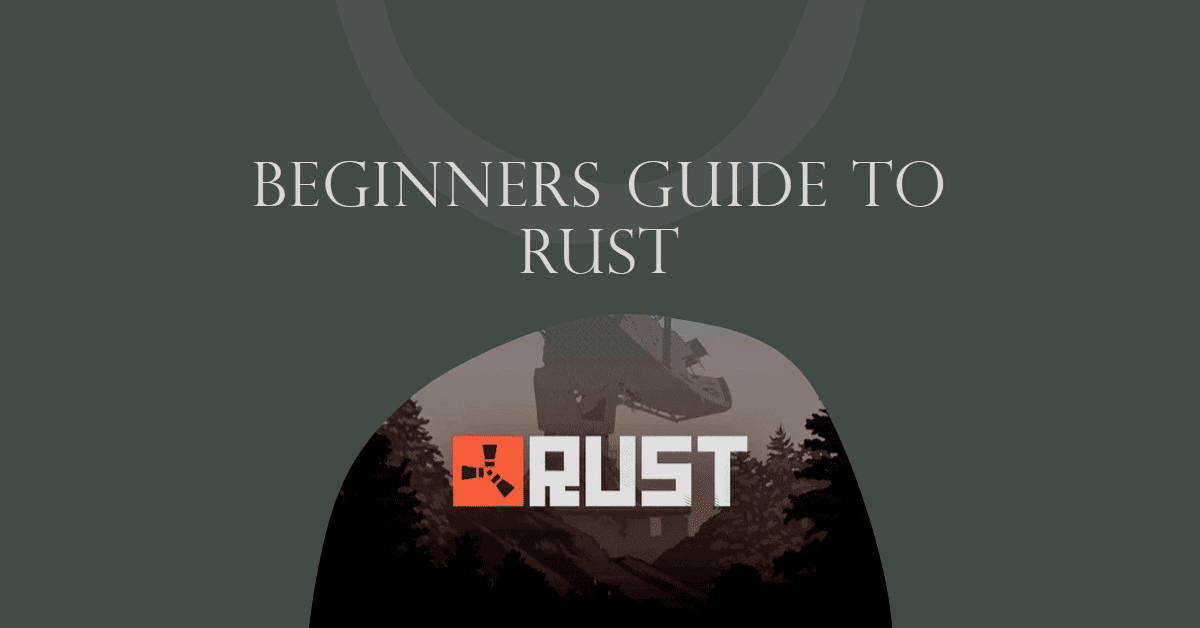The Beginner’s Guide to Rust
The Ultimate Beginner's Guide to Rust
Welcome to the world of Rust, a brutal multiplayer survival game that challenges your intellect, resilience, and capacity to navigate both environmental and human threats. Picture this: you wake up alone on a strange island, naked, cold, and weaponless. The biting cold winds whip around you, and you hear the howls of wild animals in the distance. Your stomach growls, and your throat feels parched. Your first thought? Survival.
In Rust, every day is a battle against the elements and other players. You will need to gather resources, craft tools, and build shelters to protect yourself from the harsh weather, ravenous wildlife, and, more crucially, hostile players. Trust is a rare commodity in Rust; everyone is vying for survival, and alliances can be as fleeting as a sunset.
This guide aims to equip new players with the knowledge to survive and thrive in Rust. We will explore the game's core mechanics, from understanding your environment and its resources to the vital aspect of crafting, along with some survival tips. Let's get started.
Understanding the Environment
In Rust, the environment is not just a backdrop—it's an active participant in your survival saga. You start with nothing in an unfamiliar landscape. Trees, stones, animals, rivers, and ruins of old structures are spread across the map. Each of these elements serves a purpose in the survival game. For instance, you can gather wood from trees, stone from rocks, but for more advanced resources, you'll need to locate specific nodes or sites on the map.
Wildlife in Rust is varied and can be both a source of food and a threat. Deer and boar offer a good source of food and crafting materials. However, be cautious around bears and wolves—they are aggressive and can kill inexperienced players quickly. Always have an escape route in mind when venturing into areas where these creatures roam.
Rust's world also has a dynamic weather system. Rain, snow, and radiation storms aren't just cosmetic—they affect gameplay. Extreme temperatures can harm you, so it's essential to seek shelter or create protective gear to withstand these conditions.
Basic Needs
Just like in the real world, your character in Rust needs to satisfy basic needs to survive: hunger, thirst, and maintaining health. You can monitor these needs via the status bars on your screen.
Finding food can be as simple as picking up mushrooms from the forest floor or as risky as hunting animals for their meat. Be aware, raw meat can harm your health, so ensure you cook it first on a campfire. As for thirst, rivers, lakes, and other water bodies are scattered across the map where you can refill your water needs.
Crafting
Crafting is the backbone of survival in Rust. It allows you to create tools, build shelters, cook food, create clothing, and more. To craft items, you need to collect the necessary resources and then use the crafting menu to create the items.
In the beginning, you'll be able to craft simple items like a stone hatchet or a wooden spear. As you progress, you'll acquire "Scrap," a form of currency in Rust that allows you to learn more advanced recipes through the use of Research and Mixing Tables and Workbenches, increasing your crafting capabilities.
Keep in mind that crafting takes time, with more complex items requiring more time to complete. This mechanic means you're vulnerable while crafting, so it's often best to do so within the safety of your base.
Building Your First Base
A base serves as your home, your fortress, and your storage facility in Rust. Building a robust and secure base is crucial to protect your resources from other players. You'll need to gather materials, primarily wood and stone, to construct your base.
Your first base doesn't have to be a grand fortress; a simple one-room structure with a door and a lock will do the trick. As you gather more resources and learn more crafting recipes, you can expand and fortify your base with stronger materials and defensive structures.
However, be mindful of where you build your base. Building near resource-rich areas might provide you with easy access to materials but can also attract unwanted attention from other players.
In the next section, we'll delve into the harsh reality of Rust's PvP nature, discuss the significance of raiding, and offer combat tips to defend yourself effectively. Remember, Rust is a game of survival, but with the right approach, you can turn it into a game of thriving.
Trust No One
In Rust, interactions with other players are part and parcel of the game. You may encounter friendly players who are willing to team up, trade, or simply coexist peacefully. But remember, Rust is a game where trust should be sparingly given. Many players adopt a 'kill on sight' policy to protect themselves and their loot, so be cautious when dealing with strangers. Even players who seem friendly at first can quickly become threats.
Communication is essential in Rust, whether it's to form temporary alliances, negotiate for resources, or plead for your life. If you're playing on a Rust server where voice chat is enabled, a microphone can be an invaluable tool. Non-verbal communication can also be used to show peaceful intentions, such as nodding your head up and down to signal 'yes.'
Understanding Raiding
Raiding is a significant part of Rust. Players raid bases for resources, for territorial control, or sometimes just for the thrill of it. As such, understanding raiding is crucial, not just for conducting raids but for defending your base against them.
Raiding tools range from simple tools like hatchets and pickaxes to explosive items like timed explosive charges and rocket launchers. The materials used to construct a base also matter a lot in its defense against raiding. A wooden base can be easily breached with simple tools, but a stone, metal, or armored base requires more resources and time to raid.
Building smart can also help in defending against raids. Tricks like building multiple doors, using fake loot rooms, or constructing traps can confuse raiders and buy you time to mount a defense or save your most valuable resources.
Learn to Fight
Eventually, you will have to fight. Whether it's to defend yourself from a wild animal, to fend off a would-be raider, or to assert dominance over valuable resources, combat is inevitable in Rust.
Weapons in Rust range from primitive tools like the wooden spear or the bow, to advanced firearms like the assault rifle or the bolt-action rifle. However, weapons are only as good as the one who wields them. Knowing when to engage, how to take cover, and how to aim accurately can mean the difference between life and death in Rust.
In close combat, movement is key. Strafe to make yourself a hard target to hit, and aim for the head to deal maximum damage. In ranged combat, take advantage of the environment. Use cover effectively and aim your shots carefully. Unlike many other games, Rust does not have an aim assist feature. This means you'll need to take bullet drop and travel time into account when shooting at a distance.
While it may seem daunting at first, with time, practice, and patience, you can improve your combat skills and stand your ground in the brutal world of Rust.
In conclusion, Rust is a game of survival, strategy, and social interaction. It's a challenging and immersive experience that rewards clever thinking, cautious optimism, and the courage to take risks. With these beginner's tips, you are now equipped to face the world of Rust. Remember, every defeat is a learning experience and every victory, no matter how small, is a testament to your survival skills. Good luck out there; you're going to need it.




